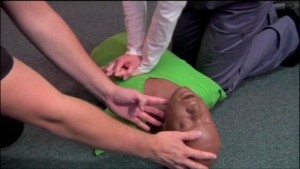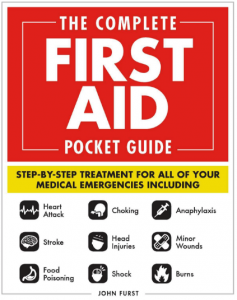A guide to two person CPR
 Two-person CPR is the same as one-person CPR except that it involves another rescuer helping out. This makes the procedure much easier because in an emergency situation you need to be quick and careful so having another person to help you out will just make CPR more effective.
Two-person CPR is the same as one-person CPR except that it involves another rescuer helping out. This makes the procedure much easier because in an emergency situation you need to be quick and careful so having another person to help you out will just make CPR more effective.
Two person CPR minimises the interruption of chest compressions for rescue breaths. Chest compressions are the most important component of CPR, and some countries now teach “Hands only CPR”.
To perform two person CPR with the help of another person, follow these steps:
- Call emergency medical help
If you see a person who isn’t breathing, is unconscious and doesn’t respond to an impulse i.e. when you try to wake the victim up by shaking them or by shouting out “Are you okay?”, you need to act fast!
Take no more than 5 to 10 seconds to check for breathing. Look, listen and feel. Look at the person chest and check for any movements. Listen for any breathing sounds by placing your ear next to his or her nose and mouth. Feel for anything breathing by bringing your cheek near the person’s mouth or nose.
If the person doesn’t wake up and isn’t breathing,they will need immediate medical attention. Ask the other rescuer to immediately call emergency medical assistance as you begin CPR.
If the scene where you found the victim isn’t safe, attempt to move them to a place of safety if possible.
- Chest compressions
Begin chest compressions immediately!
You need to perform 30 chest compressions and you need to do it fast and hard! Once the other rescuer is done calling emergency medical help, he needs to sit next to the head of the patient.
- Open the airway
As soon as you’re done performing 30 chest compressions, the second rescuer will quickly clear the patient’s airway by placing his palm on the victim’s forehead and tilting the head back gently. Using his other hand, he has to lift the chin forward gently in order to open the airway.
With the airway open, proceed to rescue breathing.
- Rescue breathing
Make sure the person who has volunteered to do this is trained. If you’re both untrained, one person should continue doing chest compressions until help arrives. If the first rescuer is tired, the second rescuer can take over.
The rescuer should provide two rescue breaths into the victim’s mouth. Give two breaths and allow the other rescuer to begin chest compressions again.
- When to switch
If the first person performing chest compressions is tired, switch positions after two minutes. The compressor should be on his 29th compression as he says “switch!” Once the other person gives the two rescue breaths, he can take over compressions. It’s important not to spend too much time switching as this will reduce the effectiveness of CPR.





